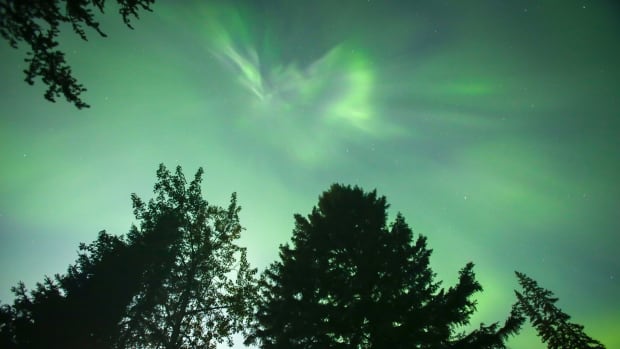One of the North’s greatest draws and most iconic phenomena could spell trouble for a growing renewable energy sector.
Solar storms that produce vibrant northern lights also create an electrical current in the ground that can cause transformers — a component of traditional energy infrastructure — to overheat. Transformers increase or decrease the voltage of electricity flowing through an energy grid.
Paul Moses, a professor at the University of Oklahoma who studies complicated disturbances to electrical power systems, said transformers can probably handle overheating for a few minutes, but solar storms that may cause the current to flow for hours can be more problematic for the electrical device.
“The insulation inside gets hot and starts to crack.… It can eventually lead to a short circuit and a worse case, like an explosion,” he said.
We all know the aurora borealis are a spectacular show overhead. But do you really know what causes them? CBC Explains.
Moses said an explosion has a “very low probability” — but big, damaging events have happened before. He said a violent solar storm in March 1989 that knocked out power across Quebec for more than nine hours is what sparked research in the field.
Certain transformers and energy grids with long transmission lines are more susceptible to these potentially damaging energy currents, said Moses. Geographical location also matters.
Solar storms are when the sun occasionally hurls charged magnetic particles toward Earth. Northern countries are especially vulnerable to major solar storms because the Earth’s magnetic field tends to attract those particles toward its poles.
NTPC monitors issue, but doesn’t log data
Communities in the Northwest Territories get their power from hydro-generating dams, diesel generators and renewable energy sources.

The Northwest Territories Power Corporation (NTPC) says northern lights and solar storms haven’t had a significant impact on its equipment or operations — but it doesn’t store data about them either.
“This is an issue we are monitoring, rather than taking specific actions,” said NTPC spokesperson Doug Prendergast in an email to CBC News. “We do not have the in-house capacity or resources to take on this issue as a top priority.”
Prendergast said the corporation is aware of research into how solar storms can affect electricity infrastructure, and he pointed out solar activity can disrupt communications systems, too.
He said NTPC is consulting with Electricity Canada and other northern utilities to identify concrete and affordable steps to respond to the potential infrastructure threat.
When renewables are added
Amid growing interest in wind and solar energy, Moses is starting to research what effect solar storms and geomagnetic disturbances can have on energy grids when renewables are added to the mix.

“We know very well the risks for traditional power systems, but… in the future high penetration of wind power, solar and battery storage, that changes the nature of the power system,” he said.
Wind and solar power are intermittent sources of energy — meaning they don’t provide a consistent, stable supply of power. Batteries are critical for renewable energy systems because they store power harnessed by the wind and the sun for later use.
Moses said preliminary research shows the fallout from a geomagnetic disturbance could be worse on a renewable energy system than a traditional energy system.
That’s because inverters needed to convert renewable energy into something that’s compatible with the grid are sensitive. A California wildfire shows it doesn’t take much for an inverter to trip or disconnect, he said.
“I think the risk is higher of a much wider blackout, if nothing is done,” he said.
Moses received an award from the National Science Foundation to support his research — which will start with the development of computer simulations and will eventually move into a lab.
If a solar storms can negatively affect renewable energy sources, Moses said one of the last phases of the project will be to develop solutions so renewables work more efficiently.


